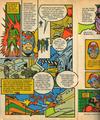Captain Zilog!







We needed the Captain to come back out of his long sleep due to the energy crisis and by using Zilog solutions he is now back battling these energy hungry creatures menacing the world.

 Buttons celebrating the Zilog System 8000 and z8000 CPU.
Buttons celebrating the Zilog System 8000 and z8000 CPU.
 Zilog’s PL/Z language for RIO (their own z80 OS).
Zilog’s PL/Z language for RIO (their own z80 OS).
 And Z-Net: Zilog’s own network.
And Z-Net: Zilog’s own network.


 The Z8000 family of chips!
The Z8000 family of chips!




|
Captain Zilog! | |
|---|---|





| Here's Captain Zilog issue #1 (thanks to Bill Degnan!) |

| Oh noes! I never got the poster or patch! |

|
Captain Zilog returns
in a new online comic
We needed the Captain to come back out of his long sleep due to the energy crisis and by using Zilog solutions he is now back battling these energy hungry creatures menacing the world. |

 Timex/Sinclair 1000
Timex/Sinclair 1000

|
The full Zilog eZ80 evaluation board with debug/upload pod. It’s a really nice upgrade from the Z80/Z800 with lotsa RAM, flash and built in ethernet. It was intended to put embedded systems on the Internet for remote monitoring vending machines, etc. by running a tiny web server. eZ80F91 MCU specs: 50 MHz CPU, on chip: 8K SRAM, 256k flash, 10/100 base T ethernet, UARTS, JTAG, I2C, SPI, ZDI (Zilog Debug Interface) and other peripherals. |

| The minimal kit |

|
So many accessories! It came many power cubes and a 5 port 10/100 ethernet switch (in case you were low on ports since one’s required for the target system, one for the debug pod). |

|
Too many plugs! The power supply "wall worts" were a bewildering assortment of plugs-of-all-nations. The top one used a shaver-style connector so the 3 adapters to the right simply plugged into the top. The bottom one required the hook-tool for removing the specific adapter. Most auto-adjust to any voltage 100-240 V, 50-60 Hz. |
1974: Ralph Ungermann establishes ZiLOG.By 2003, Zilog seemed to be on the rebound by focusing on embedded products, capitalizing on those of us familiar with the Z80 by offering the new faster, highly integrated embedded eZ80 (and z8 encore). But did they really deliver?
1985: E.A. Sack launches a restructuring effort in order to bolster company sales and profits.
1991: ZiLOG goes public.
1998: Texas Pacific Group buys the company.
2001: ZiLOG files for Chapter 11 bankruptcy protection.
2002: The company emerges from bankruptcy protection.
Maxim and Universal Electronics purchase Zilog universal remote control and secure transaction businessesBut according to this trade journal, no engineers remain even for their remaining "core business".
Transactions Enhance Zilog’s Liquidity and Allow It to Focus on Innovating in Core Microcontroller Business.
Zilog Sells Off Two Product Lines
Feb 19, 2009 - Zilog today announced the sale for cash of two of their product lines to two buyers.
The product lines sold off were their Crimzon Universal Remote Control product line (including the remote control database)
and their Zatara ARM9-based Point-of-Sale (POS) microcontroller product line.
Semiconductor company Maxim Integrated Products has purchased Zilog’s Crimzon Universal Remote Control microcontroller product line …
Maxim also purchased Zilog’s "Zatara" ARM9-based secure transaction Point-of-Sale (POS) product line …
Remote control manufacturer Universal Electronics Inc. (UEI) today purchased software assets related to Zilog’s Crimzon universal remote control business …
Zilog’s Future
Last month, Zilog cut 35% of it’s workforce worldwide. Billerbeck stated today that Zilog intends to grow their remaining flash microcontroller business. However, with the exit of Dr. Norm Sheridan as head of Engineering, as well as the departure of almost all of Zilog’s experienced design engineers, Zilog’s present management does not intend to develop any new silicon because they no longer have a design engineering team. Only two or three semiconductor design engineers remain with the company.